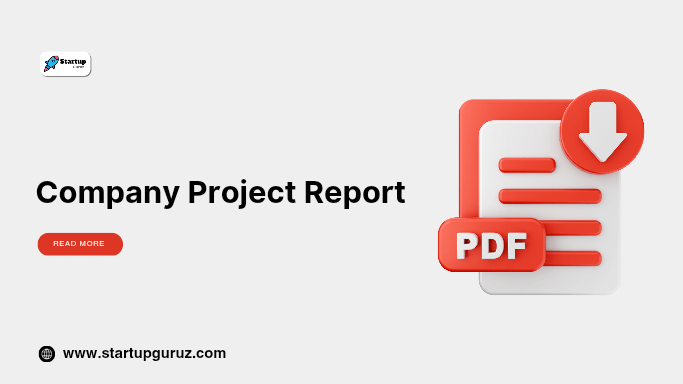Company Project Report
Comprehensive Guide to Creating a Company Project Report
A company project report is a critical document that provides an overview of a company’s project, its feasibility, financials, objectives, and potential impact. It is an essential tool for decision-making, attracting investors, securing funding, and implementing effective strategies. A well-structured company project report reflects professionalism and instills confidence in stakeholders.

Why is a Company Project Report Important?
- Financial Planning: Outlines the financial requirements and potential returns.
- Decision Making: Acts as a tool for informed decision-making by stakeholders.
- Investor Attraction: Demonstrates project viability and profitability to potential investors.
- Performance Benchmark: Helps in measuring the progress and success of the project over time.
- Transparency: Enhances trust by providing clear and accurate details about the project.
Key Components of a Company Project Report
1. Executive Summary
The executive summary is a concise overview of the project. It should highlight:
- Project name and purpose
- Key objectives
- Financial highlights
- Expected outcomes
2. Company Profile
Detail the company’s background to establish credibility. Include:
- Company name, type, and location
- Founding date and history
- Vision and mission statements
- Key achievements
Example:
- Company Name: BlueTech Solutions
- Type: IT Services and Consulting
- Mission: To deliver innovative IT solutions globally
3. Project Overview
Explain the project’s objectives, scope, and significance. Cover:
- Project goals: What the project aims to achieve
- Target audience: Who benefits from the project
- Unique features or offerings
4. Market Analysis
Provide a thorough market analysis to showcase the demand and potential success of the project. Include:
- Industry Trends: Current market trends and growth potential
- Target Market: Details about the target audience’s demographics and needs
- Competitor Analysis: List competitors and their market share
5. Financial Plan
A detailed financial plan is the backbone of the project report. Include:
- Capital Requirement: Amount needed for the project and its allocation
- Revenue Projections: Expected income over a specific period
- Expense Breakdown: Fixed and variable costs
- Profitability Analysis: Break-even point and return on investment (ROI)
Example Expense Table:
| Expense Type | Amount (₹) |
|---|---|
| Equipment Costs | 10,00,000 |
| Marketing Budget | 2,50,000 |
| Operational Expenses | 5,00,000 |
6. Risk Analysis
Identify potential risks and propose mitigation strategies. Include:
- Market risks
- Operational risks
- Financial risks
Example:
| Risk | Likelihood | Impact | Mitigation Strategy |
|---|---|---|---|
| Market Volatility | Medium | High | Diversify target markets |
| Resource Shortages | Low | Medium | Maintain backup suppliers |
7. Project Timeline
Include a detailed timeline of the project with milestones. Cover:
- Project initiation date
- Key milestones and deadlines
- Expected completion date
8. SWOT Analysis
Conduct a SWOT analysis to highlight the project’s strengths, weaknesses, opportunities, and threats.
| Strengths | Weaknesses |
|---|---|
| Strong team expertise | High initial investment |
| Opportunities | Threats |
|---|---|
| Emerging market demand | Regulatory challenges |
9. Conclusion and Recommendations
Summarize the project’s potential and provide actionable recommendations for its implementation.
10. Appendices
Attach supporting documents, such as:
- Company certifications
- Financial statements
- Market research reports
How to Prepare a Company Project Report
Step 1: Understand the Objectives
Define the purpose of the project report. Is it for internal planning, attracting investors, or securing loans?
Step 2: Gather Data
Collect accurate data about the company, market, and financials.
Step 3: Structure the Report
Follow a logical structure that covers all key components.
Step 4: Use Visuals
Include graphs, charts, and tables to make data easily understandable.
Step 5: Review and Finalize
Proofread the report to eliminate errors and ensure clarity.
FAQs About Company Project Reports
1. What is a company project report?
A company project report is a document that outlines the details, feasibility, and financial requirements of a project.
2. Why is a project report necessary?
It helps in decision-making, securing funding, and attracting investors by showcasing the project’s viability and profitability.
3. What should a project report include?
It should include an executive summary, company profile, market analysis, financial plan, risk analysis, and project timeline.
4. How do I write a project report?
Understand the project’s objectives, gather data, follow a structured format, and include visuals to enhance readability.
5. Can I use a template for my project report?
Yes, templates can help maintain consistency and save time.
6. How important is the financial plan in a project report?
The financial plan is crucial as it demonstrates the project’s profitability and helps secure funding.
7. How do I analyze risks in a project report?
Identify potential risks, evaluate their impact, and outline mitigation strategies.
8. What is the role of a SWOT analysis in a project report?
A SWOT analysis highlights the project’s strengths, weaknesses, opportunities, and threats, helping stakeholders make informed decisions.
9. How long should a company project report be?
It should be comprehensive yet concise, typically ranging from 10 to 30 pages, depending on the project’s complexity.
10. Can a project report be prepared in Excel?
Yes, financial projections and data tables can be prepared in Excel and included in the report.